You might remember studying conic sections, such as parabolas, circles, ellipses, and hyperbolas. These are curves in the plane that arise through polynomial equations of degree two in two variables.
Some examples of parabolas are given by the equations , , , and (graphed below).
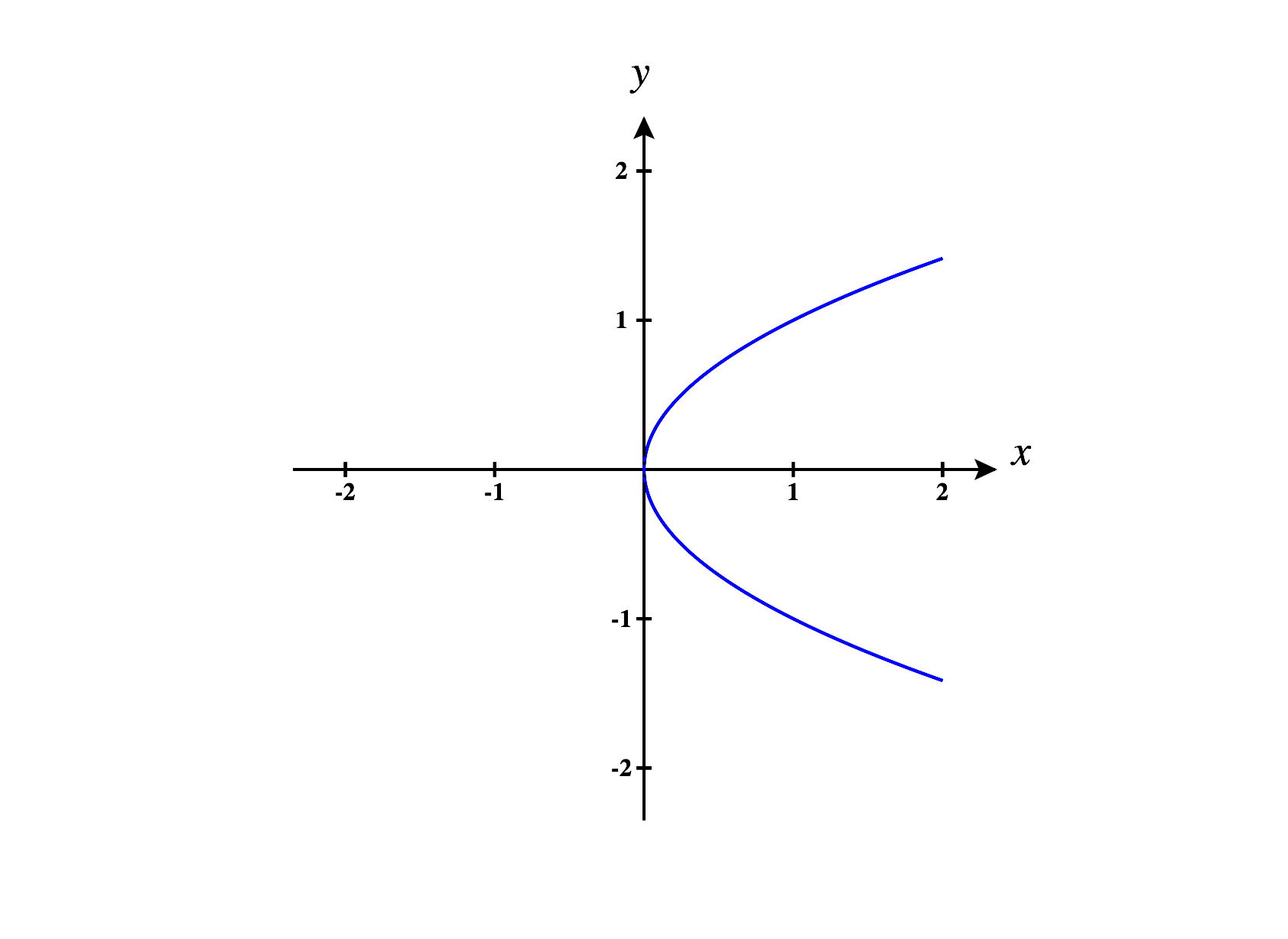
Some examples of ellipses are given by the equations (which is also a circle), , and (graphed below).
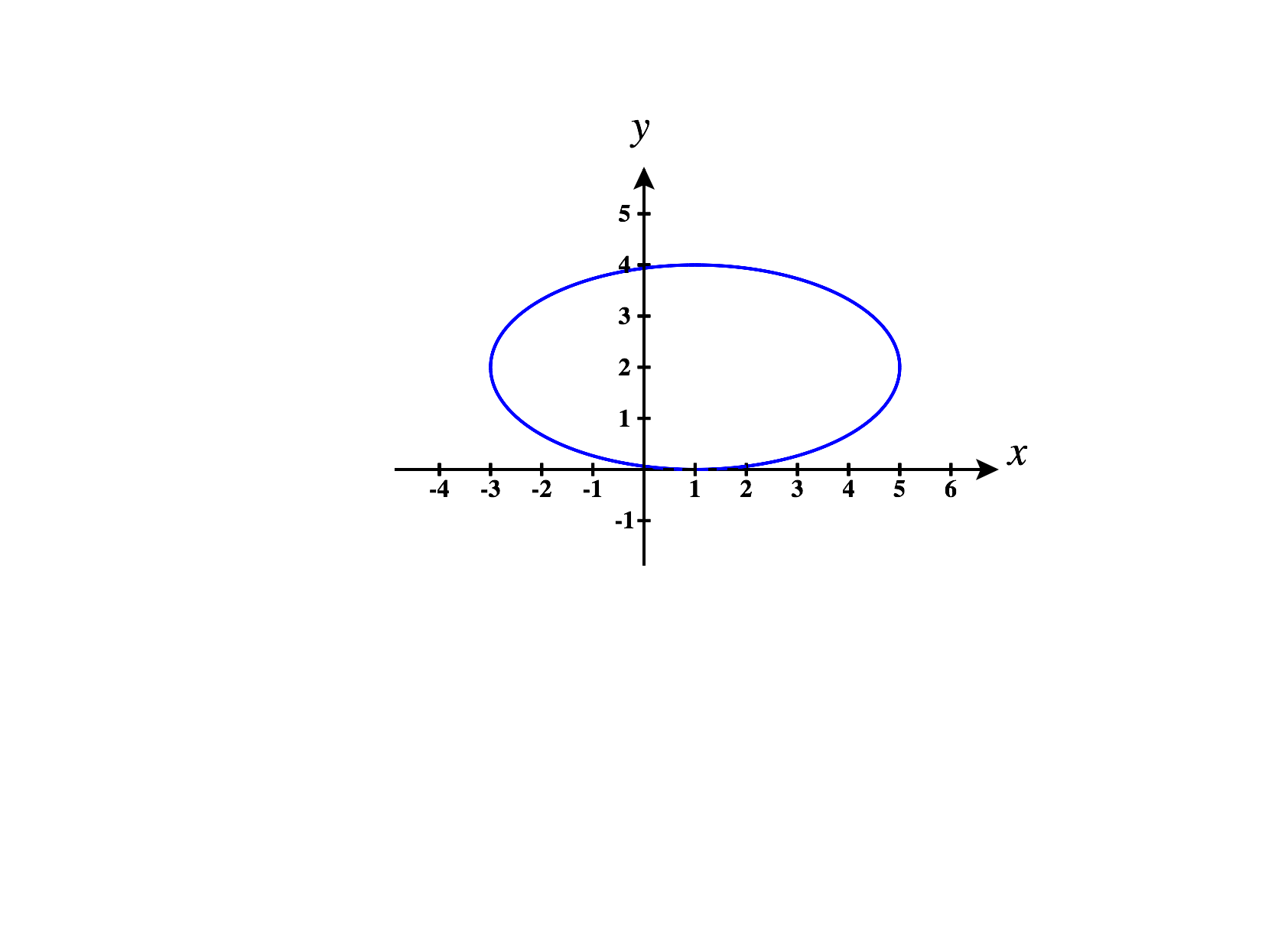
Some examples of hyperbolas are given by the equations , , and (graphed below).
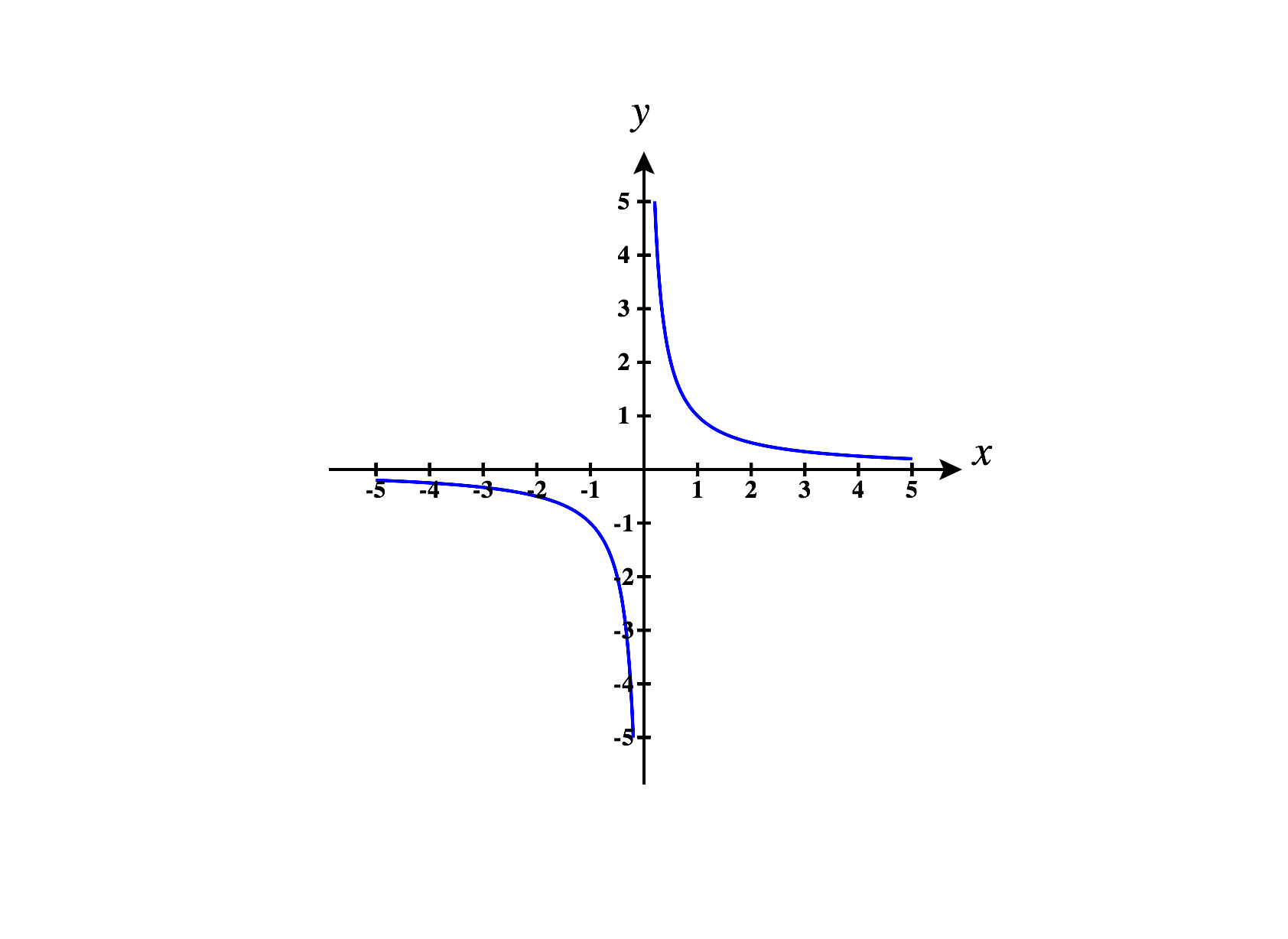
Notice that all of these conic sections can be defined by polynomial equations with terms of total degree at most .
Here, total degree can be computed by adding the -degree and the -degree, so the term has total degree , and the term has total degree .
Quadric Surfaces are the three dimensional analogue of conic sections. That is, a quadric surface is the set of points in satisfying some polynomial of degree two in three variables.
Dealing with quadric surfaces in general can be computationally cumbersome, so we’ll focus on quadric surfaces in some simple forms.
Below, we graph the ellipsoid .
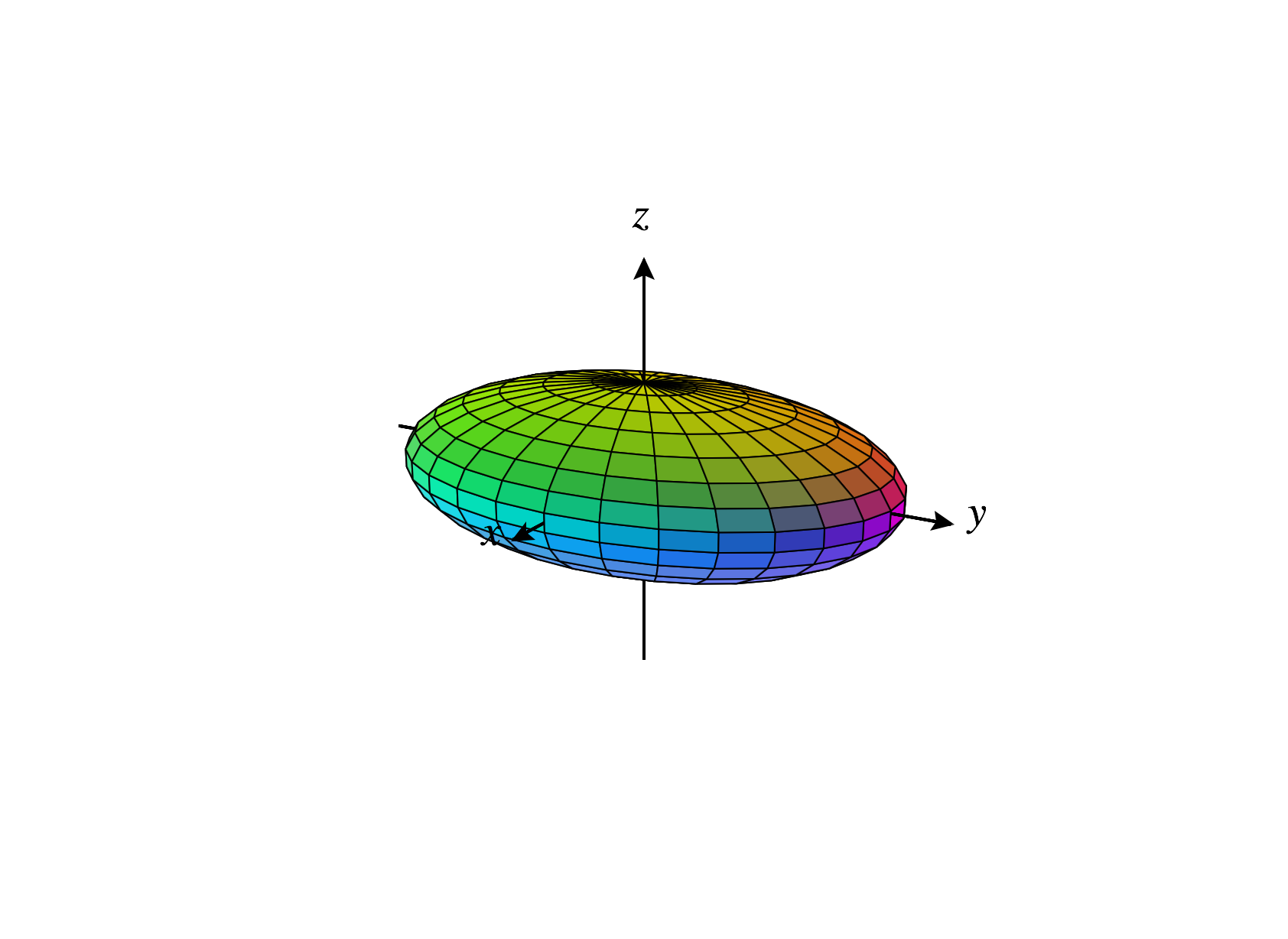
An ellipsoid is kind of like a three dimensional ellipse. In fact, the sections and contour curves of such an an ellipsoid are ellipses.
Notice that the ellipsoid above looks like a sphere that’s been stretched in the and directions. The constants , , and determine how much it is stretched in the , , and directions, respectively.
In the special case that , this ellipsoid is a sphere of radius .
Below, we graph the elliptic paraboloid .
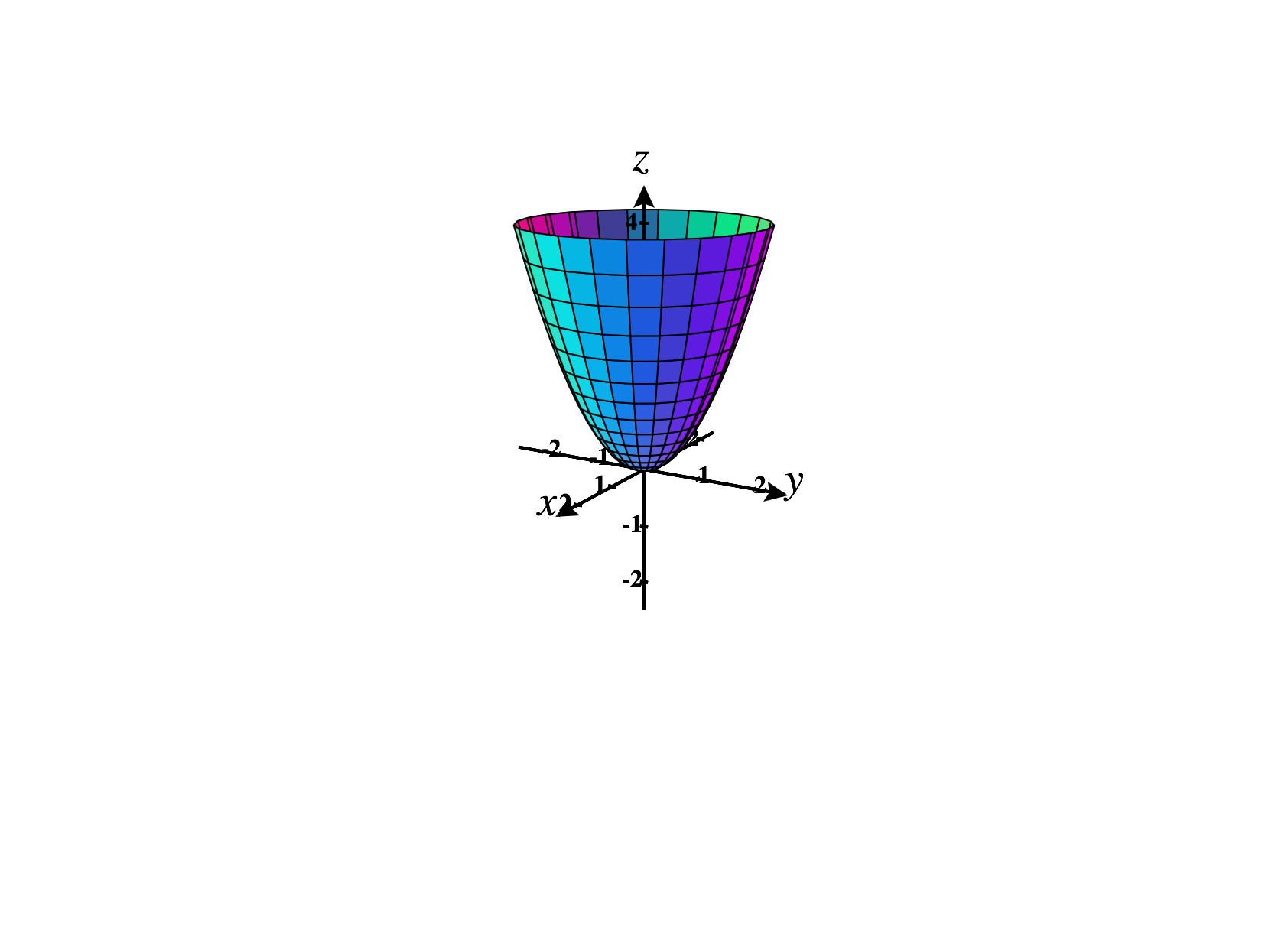
The contour curves of such an elliptic paraboloid are ellipses, however the sections are parabolas which all open in the same direction.
As with ellipsoids, the constants , , and determine how much the elliptic paraboloid is stretched in the , , and directions, respectively. Furthermore, if is negative, then the elliptic paraboloid will open downward.
Below, we graph the hyperbolic paraboloid .
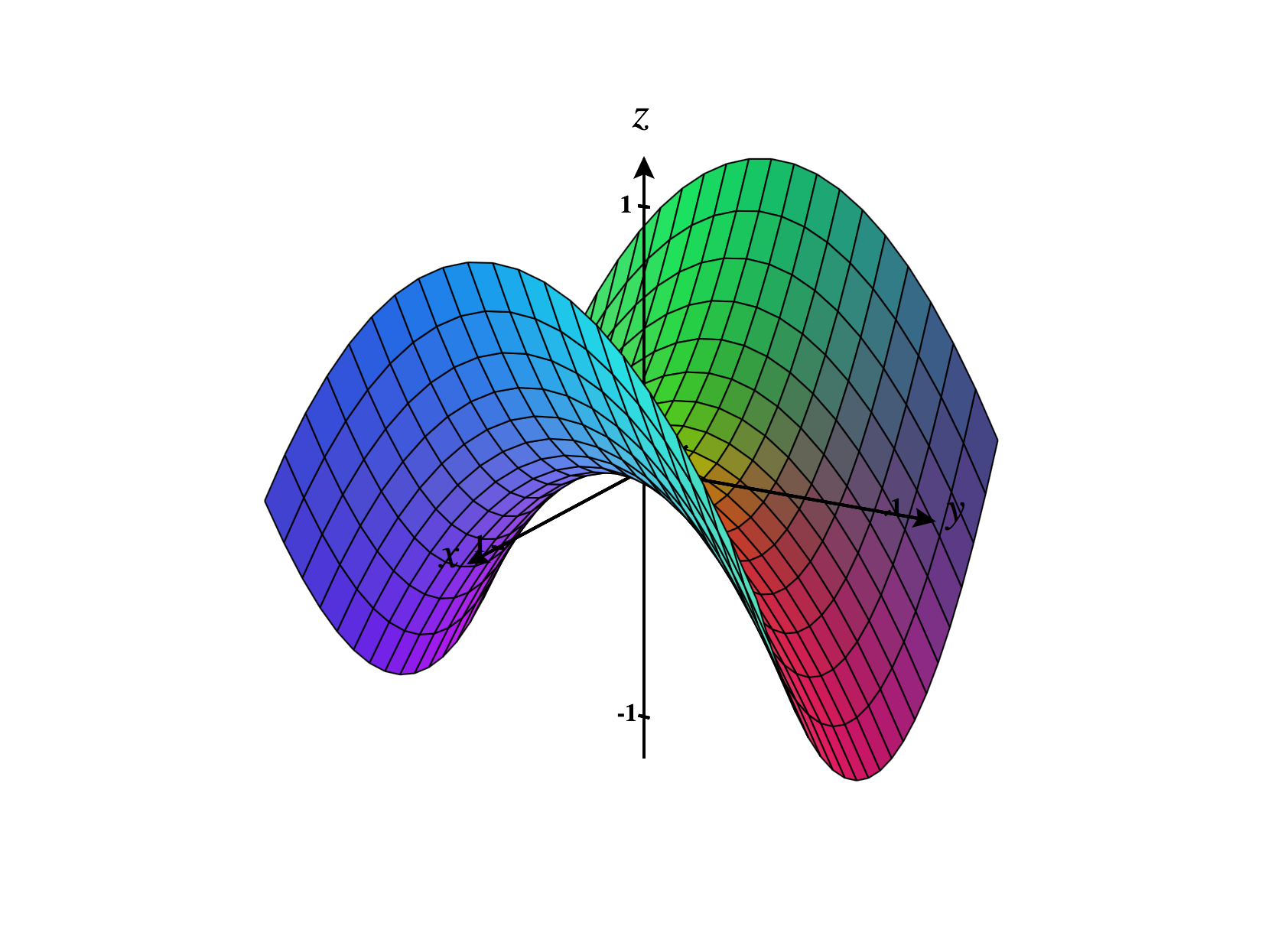
Next, we graph the hyperbolic paraboloid . Notice that this reversal of sign is accomplished by taking , and how it changes the orientation of the hyperbolid paraboloid.
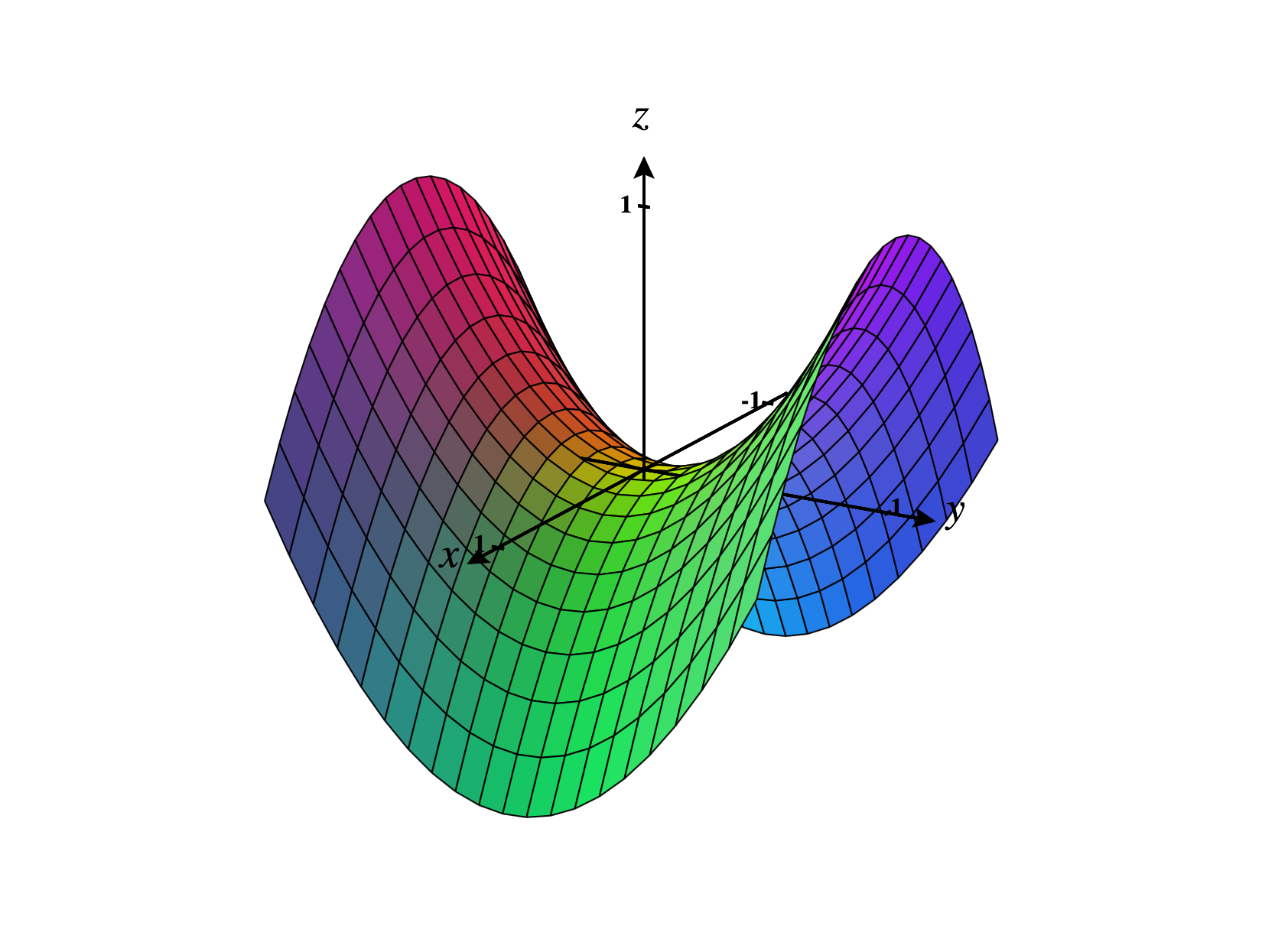
The contour curves of such a hyperbolic paraboloid are hyperbolas, and the sections are parabolas opening in opposite directions for and sections. This surface is often described as a “saddle”.
As usual, the constants , , and determine how much the hyperbolic paraboloid is stretched in the , , and directions, respectively. The sign of also controls the orientation of the hyperbolic paraboloid.
Below, we graph the cone .
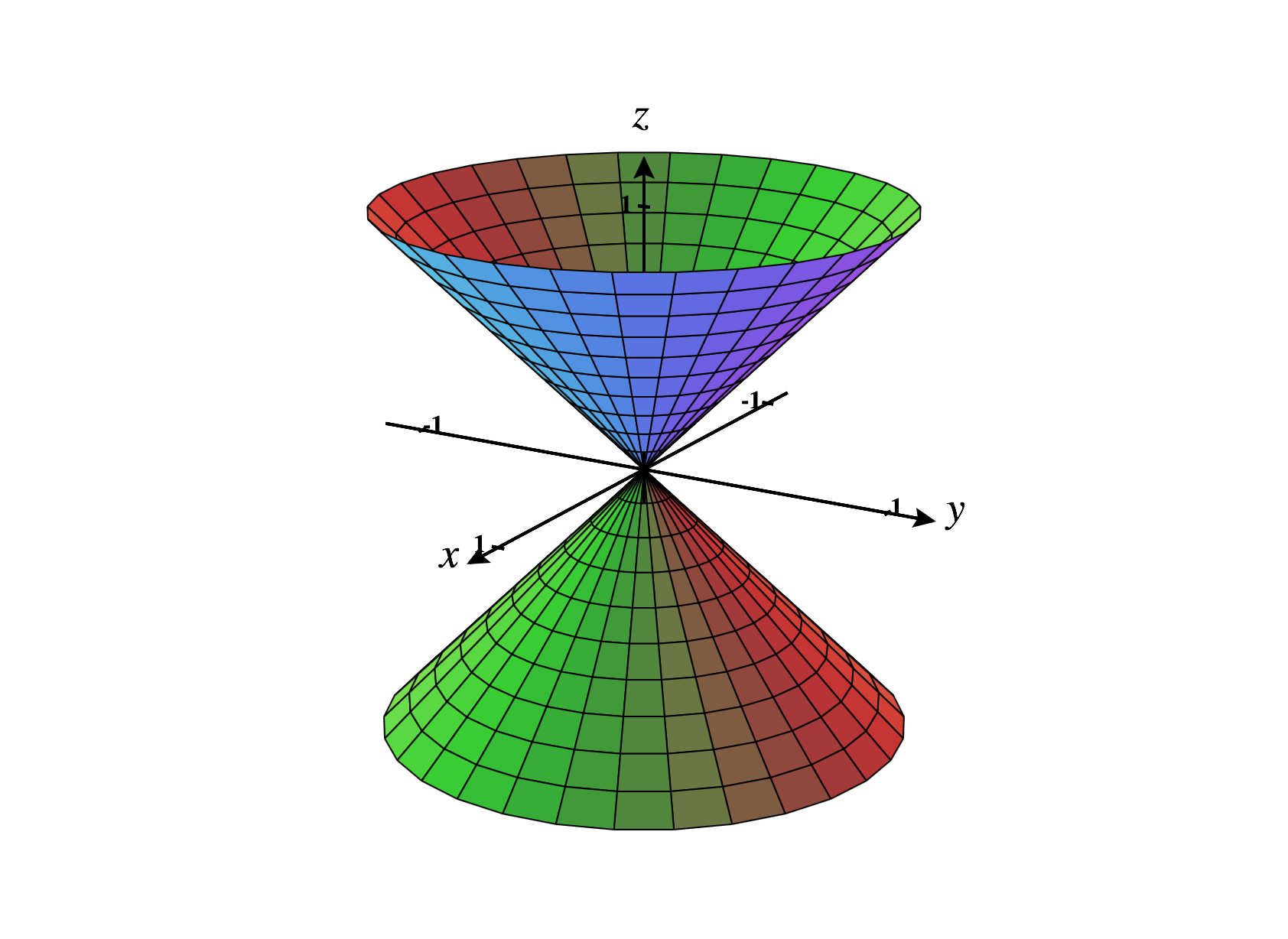
The contour curves of such an elliptic cone are ellipses, and the sections by and are pairs of intersecting lines.
As usual, the constants , , and determine how much the cone is stretched in the , , and directions, respectively.
Below, we graph the hyperboloid of one sheet defined by the equation .
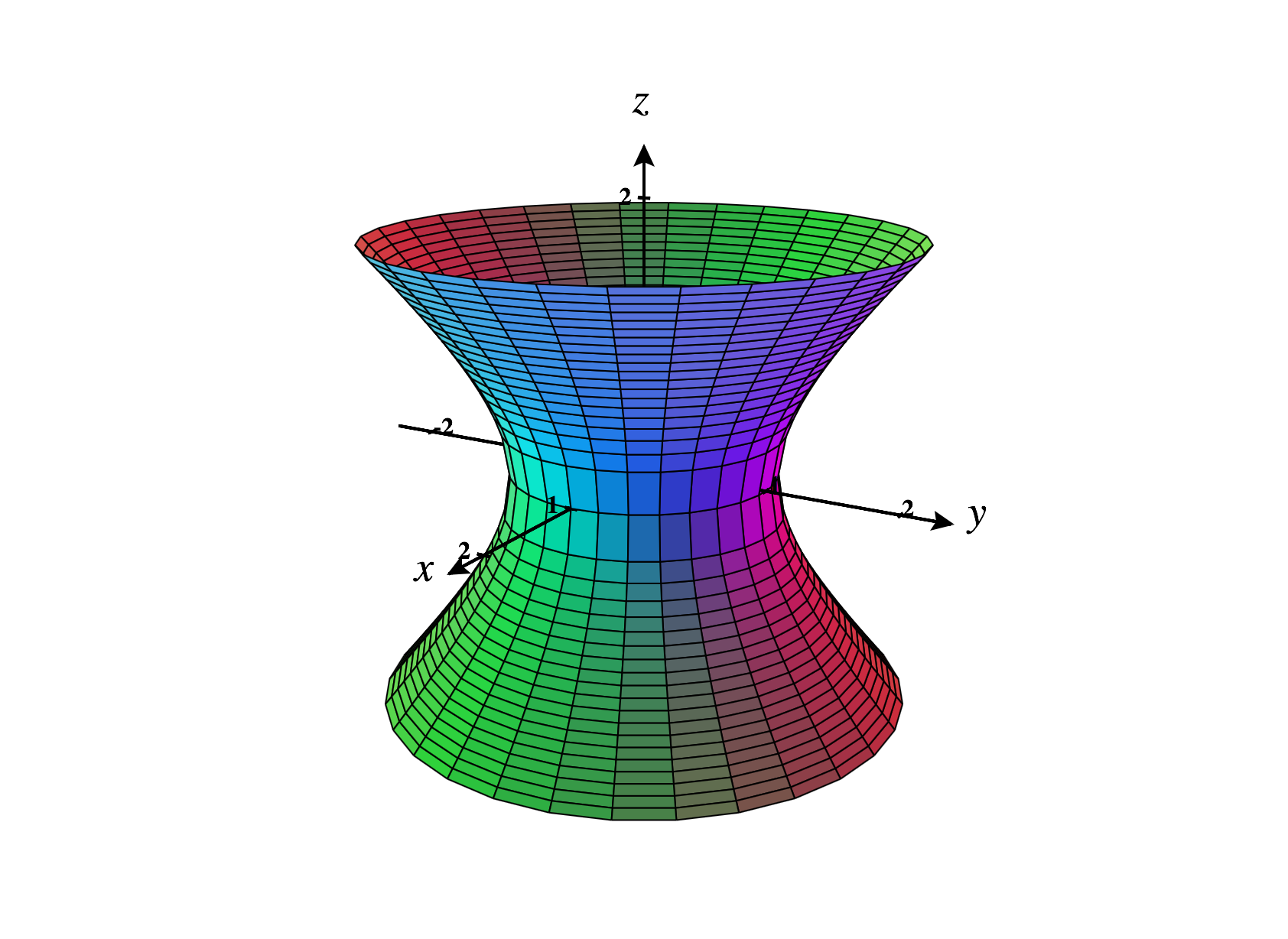
The contour curves of such a hyperboloid are ellipses, and the sections are hyperbolas.
As usual, the constants , , and determine how much the hyperboloid is stretched in the , , and directions, respectively.
Below, we graph the hyperboloid of two sheets defined by the equation .
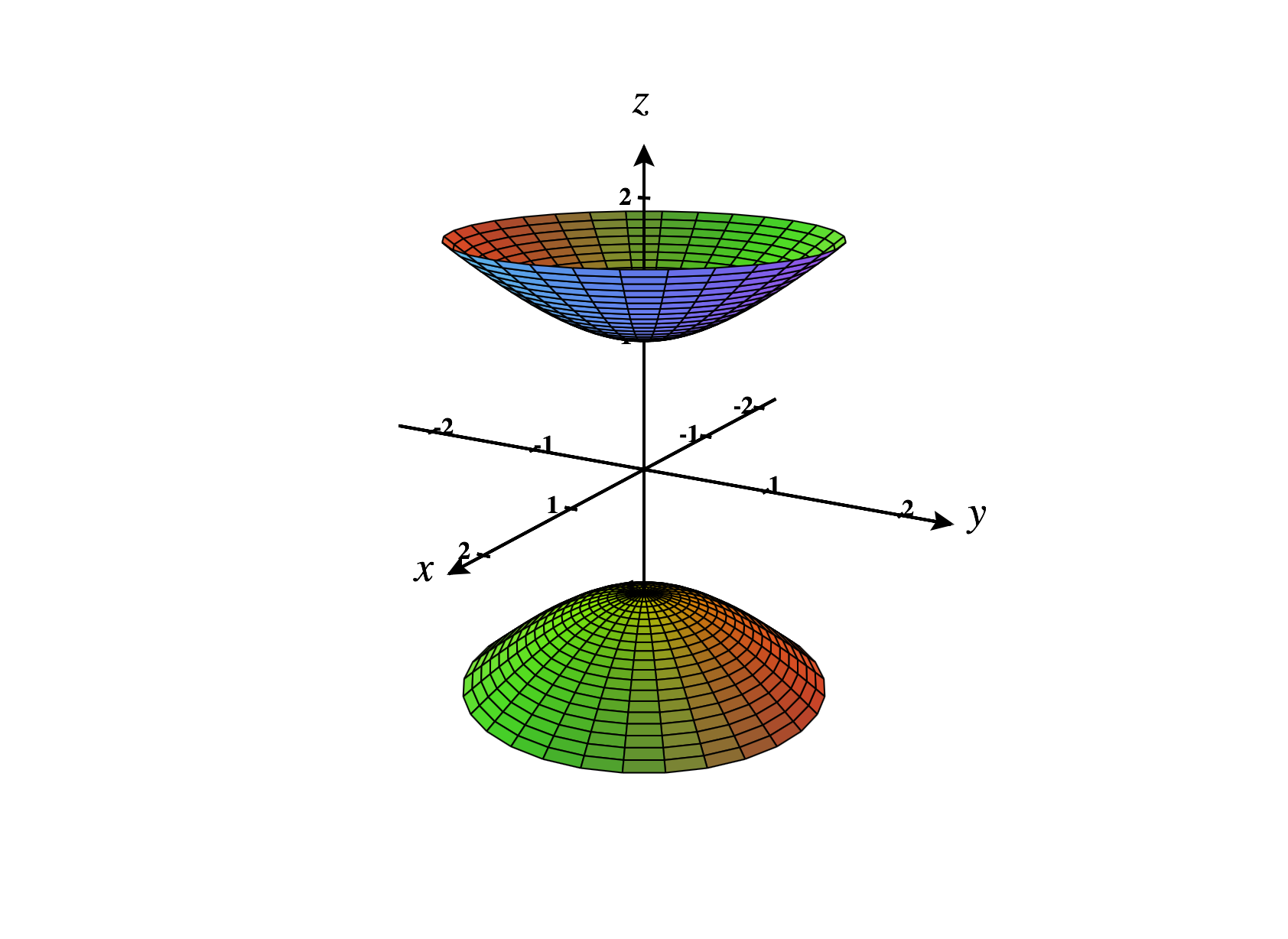
The contour curves of such a hyperboloid are ellipses, and the sections are hyperbolas. We describe this as the hyperboloid “of two sheets” since it has two disconnected pieces, as opposed to the hyperboloid of one sheet, which has only one.
As usual, the constants , , and determine how much the hyperboloid is stretched in the , , and directions, respectively.
The cone, hyperboloid of one sheet, and hyperboloid of two sheets are closely related. In fact, they can all be viewed as variants of an equation of the form In the case where , this is a cone. In the case where , this is a hyperboloid of one sheet. In the case where , this is a hyperboloid of two sheets.
Although we won’t really work with quadric surfaces in their most general form, we will consider quadric surfaces that are translations of the forms given above.
For example, the graph of the equation is an ellipsoid centered at .
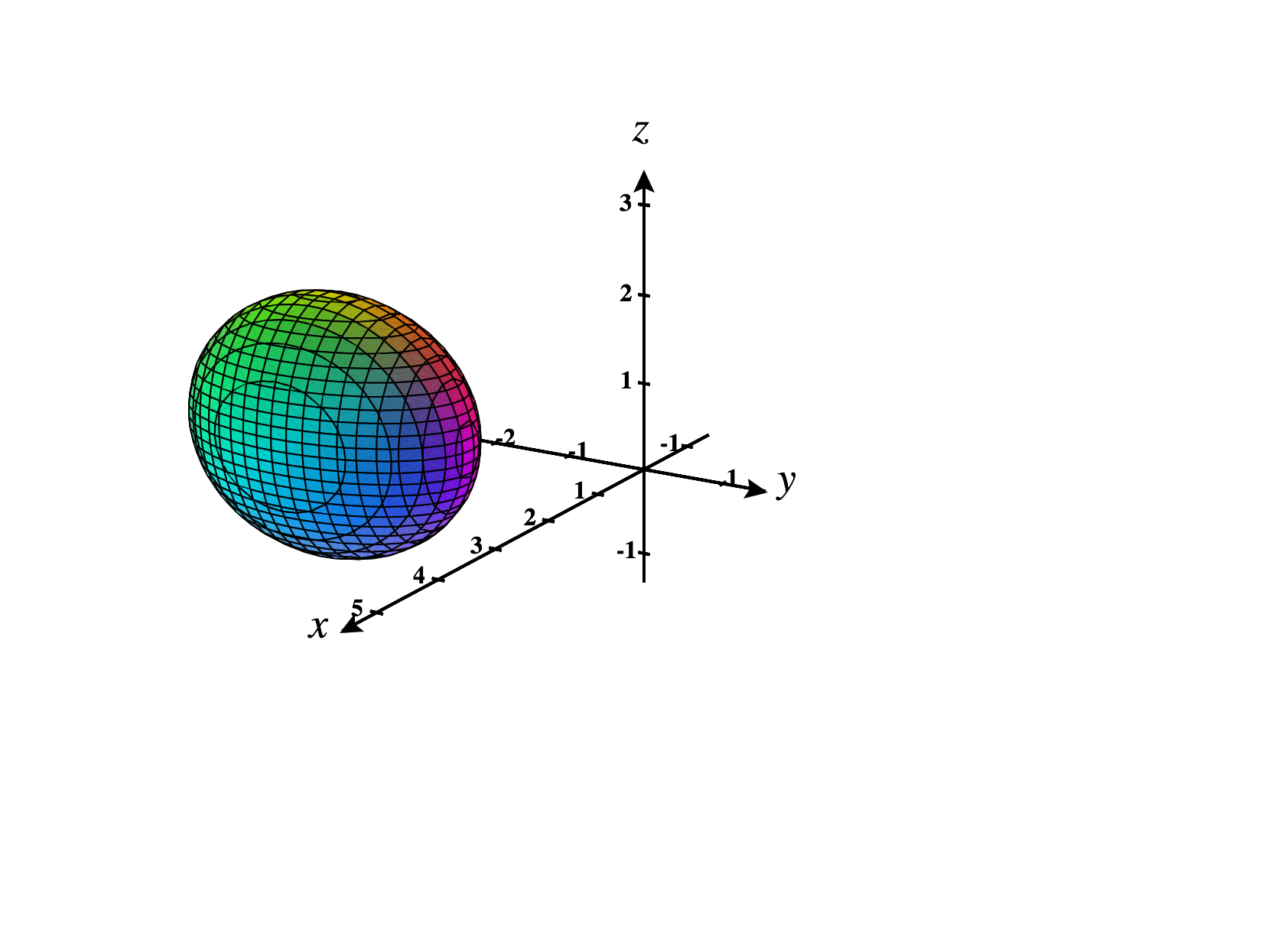
However, equations describing quadric surfaces might not always be given to you in easily identifiable forms. In these cases, you might have to do some algebra in order to get the equation into a form where it can be identified as a particular quadric surface. These manipulations will frequently involve completing the square.
We now work through an example of identifying a quadric surface given in a non-standard form.
Our strategy for writing this equation in a recognizable form will be to group terms involving , group terms involving , and group terms involving . We’ll then complete the square for each variable.
Grouping terms by variable, we have For each of these grouping, we factor out the leading coefficient, obtaining We now add or subtract as needed to make the quadratics into squares, getting We factor the quadratics to get Finally, we divide by the constant on the right, to get the final form We can see that this quadric surface is centered at , but maybe it still isn’t apparent which quadric surface this determines.
Notice that this form is similar to our standard form for a hyperboloid of one sheet, except here it’s the -term that’s subtracted instead of the -term. This is because this is, in fact, a hyperboloid of one sheet, it just happens to be “around” a line parallel to the -axis, rather than a vertical line.
Let’s look at a section, in order to help with our sketch. Taking the section , we have an ellipse parallel to the -plane, centered at , with radii and .
Combining our observations, we can sketch the graph of this hyperboloid as below.
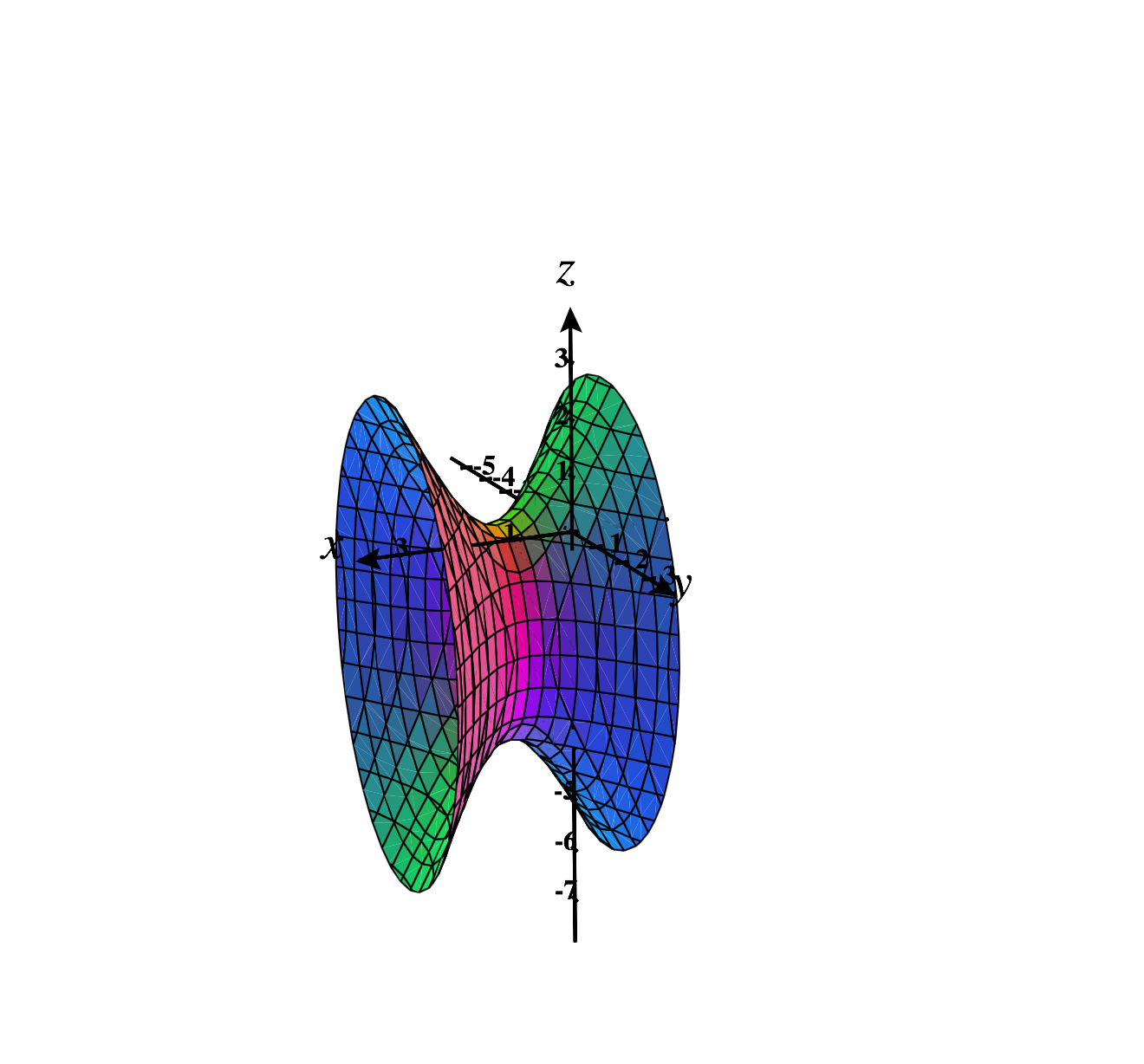
Images were generated using CalcPlot3D.